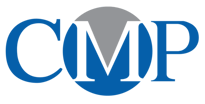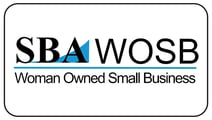The pace of change in the world of work as we know it is rapidly accelerating and going in multiple directions that are requiring smart organizations to make significant changes in order to be competitive and attract and engage a talented workforce.
I read a great blog by Libby Sander of Griffith University in Australia called 10 Way Work Will Change in 2016. I wanted to share the insights from this blog.
Here are the top 10 leadership coaching insights on how the world of work will change in 2016:
We Will Be Working Harder and Will Need More Flexibility To Be Productive
The drive for increased productivity and available technology has created the 24/7 work environment where it is difficult to turn off. The inability to turn off is not just because of manager demands, a lot of the always on mentality is self-selected - many who chose to be always on by choice. There are also the ever present demands of clients and customers who have become accustomed to instant replies.
Sander in her article says:
Studies have shown we work 47 hours per week, though many may feel that is a conservative estimate. A recent study found that 64% of managers expect their employees to be available outside work.
Although there continues to be encouraging trends toward flexible workplaces, many employees might relate to Oliver Burkeman’s suggestion that nobody cares how hard you work.
We believe that employers and customers are only interested in whether we do a job quickly and well. Burkeman’s research finds that in reality they are more interested if we wore ourselves out for them.
The Pressure To Produce Will Create More Stress
Being always on has a cost – burn out, mistakes, substance abuse, uncivil behavior. Smart HR leaders need to keep a pulse of their organization to see if the stress loads reach levels where these negative effects begin to manifest themselves. We all recall the NY Times article on negative impact the Amazon.com workplace culture was having on its employees.
A blog published in FutureWorkCentre.com says:
The research suggests many people have developed some bad habits when it comes to managing email. Nearly half of those surveyed have emails automatically sent to their inbox (push notifications) and 62 per cent left their email on all day. Those who checked email early in the morning and late at night may think they are getting ahead, but they could be making things worse, as the study showed that these habits were linked to higher levels of stress and pressure.
Distributed Workplaces Need Distributed Leadership
The business model of the past was based on teams gathering in a central location to work on a project. Team management could be direct and hands on since the leader would have physical proximity to their team. The model of today is one where team members can be located across the globe. This requires a different leadership approach. As Sanders mentions in her blog:
Both the Center for Creative Leadership and recent research have suggested that leadership practices need to be more collaborative, open and decentralized to align with changes in work and technology. The Association for Talent Development in the US has noted that most models of talent development are still Taylorist in their approach - standardized and content focused.
People Will Be Returning To The Office Space
While there will be drivers for a more distributed workforce there is also a desire of many employees to have a place where they can meet others in person. I recently had a discussion with a HR leader at a tech company operating in Atlanta’s Tech Village. She says that demands for physical office space at the Tech Village are increasing because employees want a place where they can connect with other people. Being a virtual employee is great to a degree and then can become isolating. It helps people feel they belong.
Leveraging Data Will Be Essential
We are in the Big Data era. It is not important how much data is available but how it is used. Harnessing the data so the HR leaders can report on essential metrics (cost to hire, cost to train, talent acquisition costs, workplace productivity) will no longer be a “nice to have” but instead will be an essential part of the position responsibilities.
Organizational Workforce Planning Will Need To Adjust To The Generational Shift
The generational shift – Boomers retiring, Generation Z ascending – is in full force and will only accelerate. As Sanders writes:
In 2016 3.6 million baby boomers are set to retire in the US alone, though many of these will become what is know as boomerang employees, returning to the workplace part-time or to freelance engagements. Gen Z, born between 1994 and 2010 are also entering the workforce. Though they grew up with technology, a study has found that 53% of Gen Z prefer in-person communication. Over half (52%) of both Gen Y and Gen Z stated that honesty is the most important quality for being a good leader.
The Free Agent Nation Is Alive and Well
There was a now famous Fast Company title story in 1997 by Daniel Pink called Free Agent Nation. In the article they predicated the rise of the freelance workforce. They were premature in their analysis on when this transition would take place though. The boom economy, dotcom bust, resurgent economy and Great Recession all slowed down the free agent shift for a wide variety of reason. We now see that the shift is here and the change is dramatic. As Sander writes:
The nature of work and the workforce continues to shift dramatically. Freelancers now comprise 34% of the US workforce. Most interestingly, 50% of freelancers surveyed indicated they would not go back to a traditional job no matter how much it paid. Research has shown that crafting multiple job roles and identities is on the rise. It seems the desire for meaningful work and flexibility is greater than ever.
Real Authenticity Is All That Matters
Employees want to belong to organizations that authentic in what they do. These organizations do not have to be devoted to humanitarian causes though. They have to be honest in way they do, how they serve their customers and most importantly – if they say our people are our most important asset – they have to show proof that they mean it
Disruption and Innovation Are No Longer Buzzwords – They Are Essential
I have a personal bias against the indiscriminate use of buzzwords. When I hear disruption or innovation my guard automatically goes up. The facts are here though to support that disruption and innovation is a vital part of any organization moving forward. The rapid pace of technology and communication has rendered virtually any business vulnerable to an innovative competitor who creates a better business model. No industry is immune anymore. Consider the following:
- Local restaurants now have to address competition from food truck and fast delivery
- Television may not be a cable subscription any more as online options multiply
- Oracle CEO John Chambers was recently quoted in Davos as saying that all of Oracle’s competition today did not exist 15 years ago.
The Workplace Is Becoming More Complicated
The workplace is now a diverse multi-cultural, racial, sexual and generational environment. This presents new challenges to assessments that are used for hiring and talent development. The construct of the assessment design will challenge assessment providers to be even more diligent when it comes to how to factor out bias.
Source for this blog: Libby Sander, PhD Candidate, Griffith University
![]()



